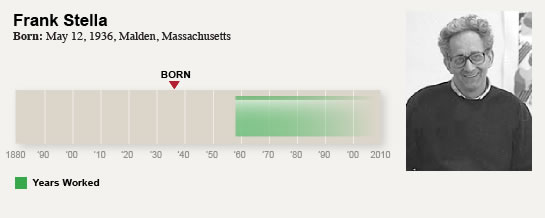Here is the address Frank Stella gave to the CFA Class of 2011:
“Art appreciation” is perhaps a dated term, but not a dated idea. In fact, it might be an idea whose time has come. We assume that as the product of the efforts of a faculty of Fine Arts, you do appreciate art, or at least still appreciate art after you have gone beyond appreciation towards the practice of art. Although this is a convocation address for the College of Fine Arts, I don’t want my remarks to exclude all the possibilities offered by the commercial and educational world. I take Fine Arts to be a holdover from the Renaissance, which includes architecture, painting, and sculpture. But there is certainly no reason why your original impulse of art appreciation and your training or education, or both, here won’t lead you beyond these limits. Of course I don’t need to remind you that wherever you go you will face constraints – psychological and practical.
Hopefully, you won’t lose sight of the original insights of art appreciation that put you in the predicament you find yourself in today. I can only suggest that finding a way to expand and enjoy those original impulses is a good idea.
Now I am sure the tone of this address is beginning to sound simplistic. Okay, okay — we get art appreciation, but will it really help us make our way in the world? You notice I didn’t say will it help us get a job – that euphemistic abbreviation for gainful and meaningful employment.
My thought is that you have gotten this far riding on the back of art appreciation. If you continue to love him and nurture him, you might be surprised to see how far he can carry you. Perhaps he can get you to the finish line at Pimlico, as Animal Kingdom will be trying for this afternoon.
I wrote about art in the mid-eighties in a series of lectures called “Working Space.” Some of you — I guess that doesn’t really work, age-wise – rather, some of your faculty will remember that I delivered them at that school across the river, the one with the maroon hockey jerseys. At the time I was reluctant and fearful to write about art. I was really afraid of words, especially words about art coming from my mouth.
I suppose that this turned out to be a mini-midlife crisis. I had been painting, making art for at least twenty-five years, but when I looked back at the art that had driven me into this predicament – Francisco Zurbarán at the Louvre, Rogier van der Weyden at the Philadelphia Museum, Manet’s “Christ” at The Metropolitan and many more, I didn’t really know anything about it. There seemed to be a gap to some, a gulf to others, between the great Western art of the past and the abstract art of the 20th century. I wasn’t worried about defending abstract art, after all if there hadn’t been great Western art of the past there wouldn’t have been modern abstract art – for sure Malevich, Kandinsky and Mondrian.
But the problem was how to really understand the art that I had appreciated so deeply. The trick is obvious – I had to appreciate it more. In the end it came down to two things: I had to see and know more. Seeing meant shunning reproductions and facing the works directly. For me, the best and most informative experience is to find a work of art of the past that is still preserved in the space it was intended to fill. The best example, because it is so exquisite and so manageable at the same time, is the Annibale Caracci and Caravaggio Chapel in Santa Maria del Popolo in Rome.
Seeing more is in a sense obvious, and so is knowing more. Art appreciation has taught us that the literature counts. Art history is not for the faint of heart. And I think this is as good a time as any to express my regrets that “Working Space” has no footnotes or bibliography. Most of the ideas and a lot of the inspiration to carry on came from art historians I loved and respected. It all started at school with Bobbie Rosenblum, Tim Holderbaum, Bill Seitz, Kurt Weitzman, Rudolph Wittkower, Julius Held, and on to Meyer Schapiro – the whole faculty of the NYU School of Fine Arts, and on again to the writers and editors such as Michael Fried and Phil Leider.
And so I hope that the surviving art and its literature which make up your experience of art appreciation continue to give you a lift, an affordable high.

Image from artstory.com
